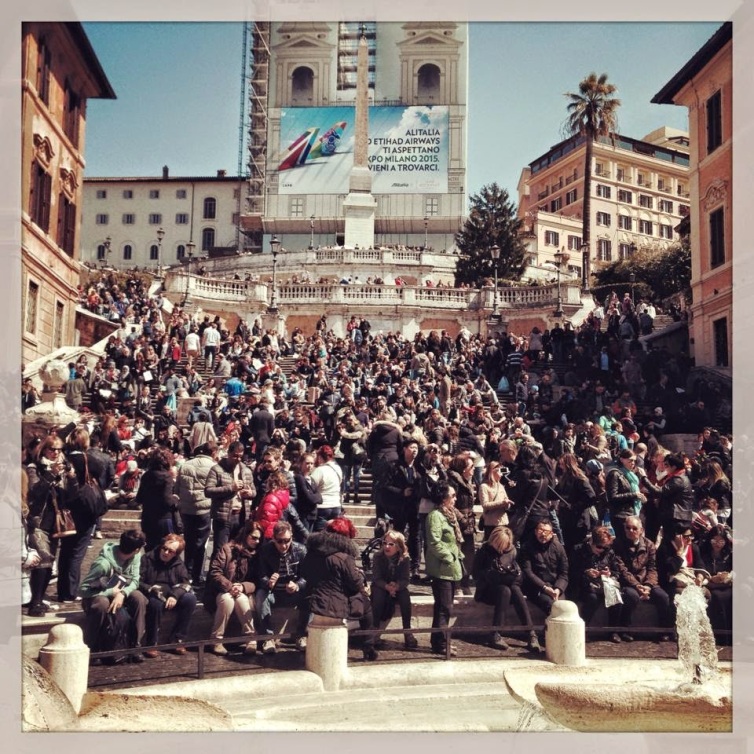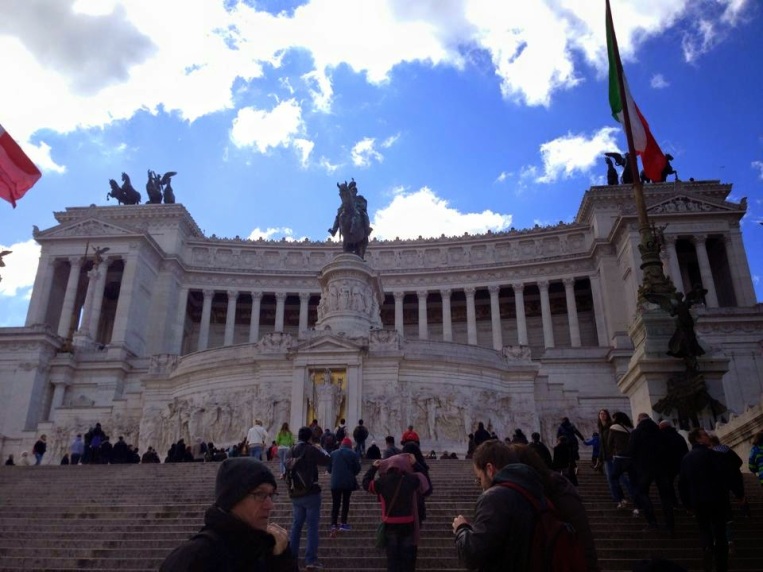7 Must-See Destinations in Rome
As a history geek, I have long dreamed of traveling to Rome, the capital city of Italy and the former seat of the very powerful Roman empire, to explore its history and find out the stories, we don’t usually read in the history books.
I imagined myself in front of the Colosseum and the Roman Forum, admiring the ruins of a civilization that controlled and changed the history of the Western world.
I had the pleasure of visiting Rome during my recent European journey and it was awesome. It was everything I have imagined it to be, and then some. I spent three days and two nights in the Eternal City, but even those were not enough to cover all of the important sights and travel destinations in the city.
Without any hesitation, I promised to come back and explore areas I wasn’t able to include in my jam packed itinerary.
Nevertheless, I decided to share with you the main highlights of any visit to Rome, regardless of your areas of interest. Even better, I am including directions to get to them using the Metro, to cut your travel time, and to stretch your travel budget (cabs are crazy expensive).
St. Peter’s Basilica and St. Peter’s Square
Without a doubt, the main travel destination in Rome is the Basilica and the expansive grounds within the St. Peter’s Square. Within the complex, you can also visit the Sistine Chapel, the site of the papal conclave, and the Vatican Museum. If you are planning a visit to these sites anytime soon, it is best that you visit very early (6am or so), because the lines get really long, as in really, really, really long. I was in the Vatican during Eastern Monday and the lines were unbelievable.
To cut you travel time, it is best to the Metro line A (Red Line) and get off at the Ottaviano station. You can also try the Cipro station if you want to come visit to the Vatican Museum first. If you are coming from Anagnina area, it is a long ride since you will travel 21 stations to get to Ottaviano. But it is still faster than taking a bus or a cab. Cheaper too. If you are coming from Battistini, the ride is shorter, since its only five station from there.
The Colosseo
 After a half-day exploration of the Vatican grounds, a lot of people decide to come visit the Colosseum next. After all, it is one of the most famous historical and architectural sites for which Rome is known for. This impressive elliptical amphitheater was built during the Flavian dynasty and three emperors saw to its constructions.
After a half-day exploration of the Vatican grounds, a lot of people decide to come visit the Colosseum next. After all, it is one of the most famous historical and architectural sites for which Rome is known for. This impressive elliptical amphitheater was built during the Flavian dynasty and three emperors saw to its constructions.
It is the largest amphitheater in the world. It hosted bloody gladiator games during its heyday, but now its portions are in varying stages of ruin.
As expected, hundreds of thousands come to visit the Colosseum located at the Piazza Colosseo. If you’re planning to come visit, it, you also need a lot of patience since the lines are also long no matter what time of the day you arrive.
To go to site, you have to transfer to Metro line B (the blue line) and get off at the Colosseo station. if you are locate dalong the red line, the best way is to go back to the Roma Termini station (the central station) and transfer. From termini, you will pass by Cavour and then Colosseo if you are going to the direction of Laurentina.
The Roman Forum
The ruins of the Roman forum is located very close to the Colosseo so it is advisable to just stretch you legs and walk the few hundred meters to the site. This rectangular plaza is located around the many important government buildings and is located in the very center of Roma Capitale. Even during the ancient times, the forum or Forum Magnum was an important part of daily Roman life, It is the center of commerce and discourse among Roman scholars. Along the way, way to the forum, you will pass by several porticoes, which are also in ruins.
To get to the Roman Forum, you have to take the Metro line B (the blue line and get off the Colosseo station.
The Trevi Fountain
One of the most visited sites in all of Italy is the Fontana de Trevi or simply the Trevi Fountain. Lovers from the the world over, come to visit this Baroque fountain and throw a coin into its pool, thanks to a wildly popular superstition that if you make a wish to the fountain, it will come true. Everyday, around 3,000 Euros are thrown into the fountain, which is used to subsidize indigent Romans. The fountain was built in the 18th century. The reason for its construction can be traced to as far back as the the original Aqua Virgo in the 19th century BC, when Roman soldiers discovered the source of pure water that can be supplied to the city. It was a little girl m who supposedly aided the soldiers, hence the name Aqua Virgo. Now, the fountain is located in a rather cluttered area of Trevi so there’s no direct way to come to it. The easiest is to take the Metro line A (red line) and get off at Barberini station. From there, it is a 10 minute walk through Via del Tritone, Via in Arcione, and then finally Via del Lavatore.
The Spanish Steps
Another famous landmark in Rome is the Spanish Steps. It is simply a plaza with 135 steps up the Trinita dei Monti church. It was built in early 18th century.
For some reason, Romans started to hang out in this place and so did the tourists, Now, it is hard to come and visit without finding flocks of people sitting on its steps while casually chatting.
I visited the site on Eastern Monday and I could hardly find a seat anywhere (hahaha). I went back to the steps at night and find it more romantic as lovers sit on the steps and while away the time.
The fountain at the base of the steps called Fontana della Barcaccia or Fountain of the Ugly Boat is enchanting in the evening. The lower fountain was supposedly designed by Pietro Bernine, the father of the more famous Gian Lorenzo Bernini, a stalwart in the Roman Baroque sculpture movement.
To get to the steps, you can actually walk from the Fontana de Trevi. But to make it easier, just take the Metro Line A (red line) and get off at Spagna station. As soon as you get out, the Piazza Spagna will welcome you like an old friend.
Altare della Patria or “Il Vittoriano
Simply called Il Vittoriano, in honor of Victor Emmanuel, the first king of a unified Italy, the Altare della Patria or the Altar of the Father is a grand monument between Piazza Venezzia and the Capitoline Hill. It is the largest monument in Rome, and there was some controversy during its construction until 1925, since a large part of the Capitoline Hill greens had to be destroyed. The main attraction of the monument is the equestrian sculpture of Victor Emmanuel. There also two statues of the Roman Goddess Victoria riding on quadrigas or emblems of triumph. At the base of the monument is the museum of Italy’s unification.
The Pantheon
The Pantheon is also one of the most visited sites in Rome. Located in Roma Capitale, it was built in 29-19 BC, under the orders of roman general Marcus Agrippa during the reign of Augustus. It is one of the best preserved buildings in Rome and has been used as a church since the 7th century. The most famous of the Pantheon is its columns and grand dome. There are eight granite columns in the first row. There are two groups of four columns after. It is located in front of the Piazza del Rotunda. It is the burial place of several important figures in Roman history including Raphael. It is located in a tight area similar to Fontana di Trevi so there’s no direct metro available. But most people just walk from the Spanish steps to the Piazza Navona and passing the Pantheon along the way.























0 comments:
Post a Comment